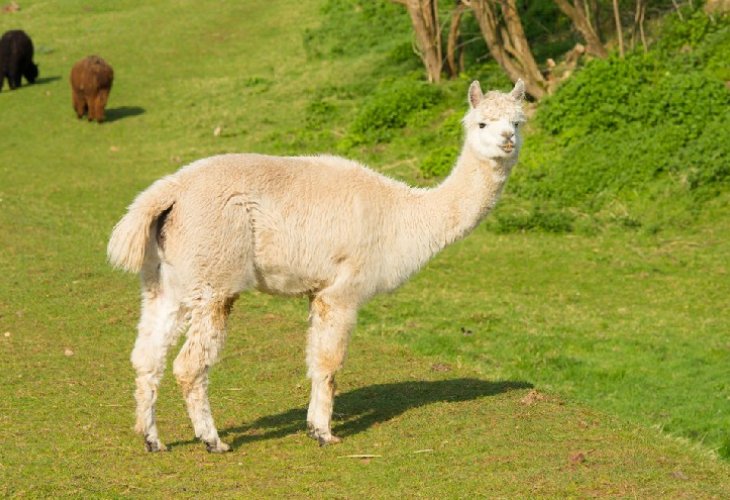Jewish Law
Is the Llama Kosher? The Torah’s Surprising Answer Hidden in Its Feet
Learn how this fascinating creature reveals the precision of biblical law and a deeper message about looking beyond appearances to uncover true spiritual purity
- |Updated

The Torah provides a precise definition of which animals are permitted for consumption—whether from the sea, the land, or the air.
Regarding land animals, the Torah states in Vaykira (Parashat Shemini, 11:1–3): “The Lord spoke to Moshe and Aaron, saying to them: Speak to the children of Israel, saying, These are the animals which you may eat among all the beasts on the earth: Every animal that has a split hoof completely divided and chews the cud — that you may eat.”
Thus, two conditions must be met for an animal to be kosher:
It must have split hooves (divided into two parts).
It must chew its cud (regurgitate and re-chew its food).
Only animals that possess both characteristics — such as cows, sheep, and goats, are considered kosher once properly slaughtered and prepared according to halacha.
The Curious Case of the Llama
According to Even-Shoshan’s Hebrew Dictionary, the llama is described as: “A ruminant animal (chews its cud) belonging to the camel family.”
Likewise, the Carta Lexicon defines it as: “A hoofed mammal from the camel family.”
At first glance, the llama seems to fit the Torah’s kosher description as it chews its cud and has cloven hooves. If the llama meets both kosher criteria, why is its meat not permitted on the Jewish table?
The Halachic Puzzle: A Kosher Animal That Walks “on Its Palms”
The answer lies in a deeper reading of the Torah itself.
Later in the same chapter, the Torah adds an additional verse (Vayikra 11:27): “And whatever walks on its paws, among all animals that walk on four legs, they are unclean to you; whoever touches their carcass shall be unclean until evening.”
This verse appears, at first, to be redundant, as the Torah had already listed the kosher signs. But our sages explain that it comes to exclude animals that may share certain kosher traits but walk on their paws rather than on hooves.
Rabbi Shlomo Yosef Mahpud, the distinguished head of the “Yoreh De’ah” Beit Din, explains: Even if an animal appears to chew its cud and have divided feet, if it walks on its palms (pads) rather than the hard edges of a true hoof, it is not kosher.

The Llama’s Feet — The Key to the Mystery
If one examines the llama’s anatomy, the mystery is solved: Unlike a cow or sheep, the llama does not actually walk on hooves. Its feet have soft, fleshy pads with two toenails that extend slightly from the front — much like a camel’s.
The llama walks on its palms, not on split hooves, exactly as described in the verse: “And whatever walks on its paws… they are unclean to you.”
Thus, although it chews its cud and seems similar to kosher species, the llama falls into the category of non-kosher animals because of the unique structure of its feet.
A Playful Thought
Perhaps this is why, as the essay humorously concludes, the first man — Adam, who named all creatures (Bereishit 2:20), gave this animal its name, “llama,” echoing the eternal question in Hebrew: “למה?” – Why? Why, indeed, does it look kosher but isn’t?
The llama teaches us that holiness lies not only in outward appearances but in details — down to where one’s feet stand. An animal can seem pure on the surface, yet a subtle distinction of a soft pad instead of a hoof, changes everything.

